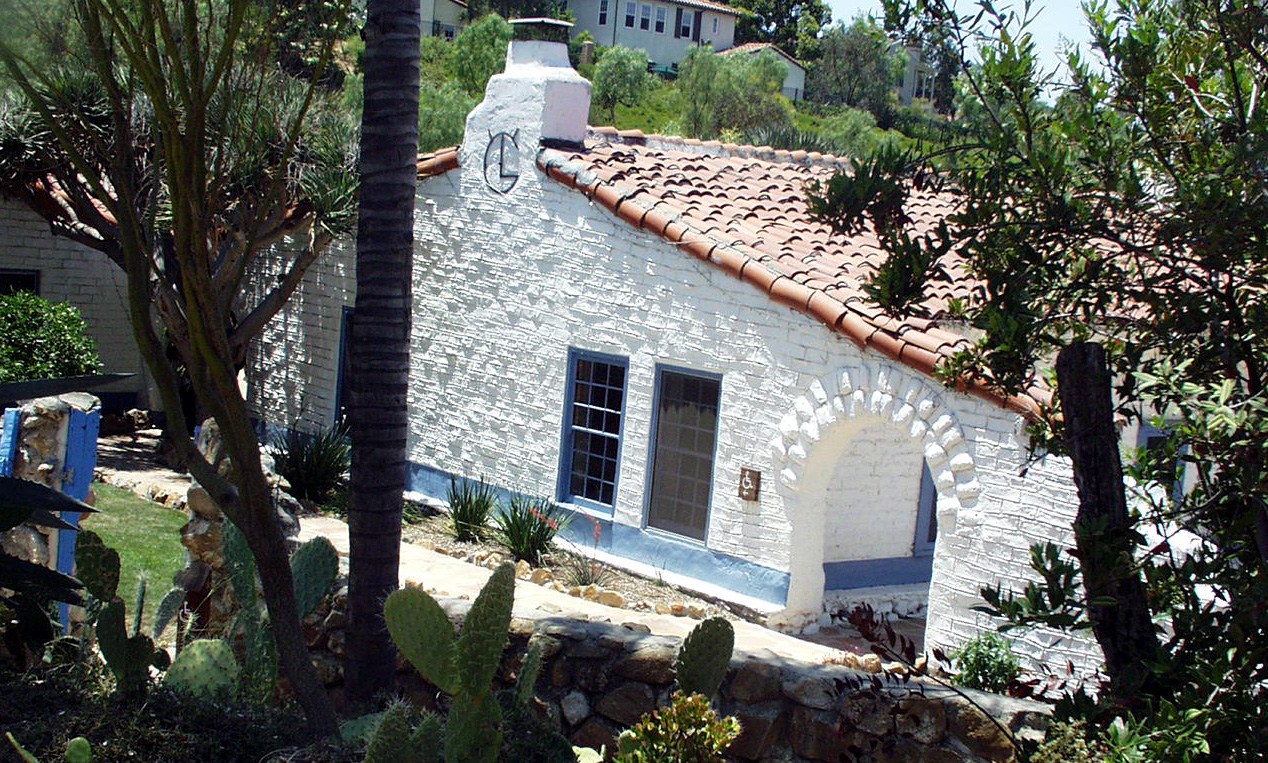
By Donald H. Harrison
CARLSBAD, Calif—Although Leo Carrillo had become a fairly well known
star on Broadway, it wasn't until after Sam Warner talked him into becoming a
movie actor that his fame became international. With earnings from the movies,
Carrillo was able to purchase in 1937 a large ranch in the hills of Carlsbad
where he brought back to life the romantic traditions pioneered in Spanish and
Mexican California by his own ancestors.
As Carrillo told it in 1961 in The California I Love, which sadly was
still at the printer's when he died, he had been appearing on Broadway when a
company called "Vitaphone" told him they were making four
experimental films with sound tracks to see how the public would react.
He wrote:
"The four attractions which were signed up for the first little short
films were Gigli of the Metropolitan Opera Company, a black-faced comedian
named Al Jolson, the Howard Brothers who sang, and myself. My fee was to
be $2,750 for the day. But there was a slight difficulty. Sam Warner
said to me, 'We haven't got much money so would you take your pay in stock at
25 cents a share?' 'No,' I replied, 'I'd rather have the money because I
am planning to go back to California one of these days and I want to invest
out there.' Al Jolson was more reasonable. He took the stock. It
went up to $400 a share soon afterwards when he did The Jazz Singer, the
first major talkie. I guessed wrong that time!"
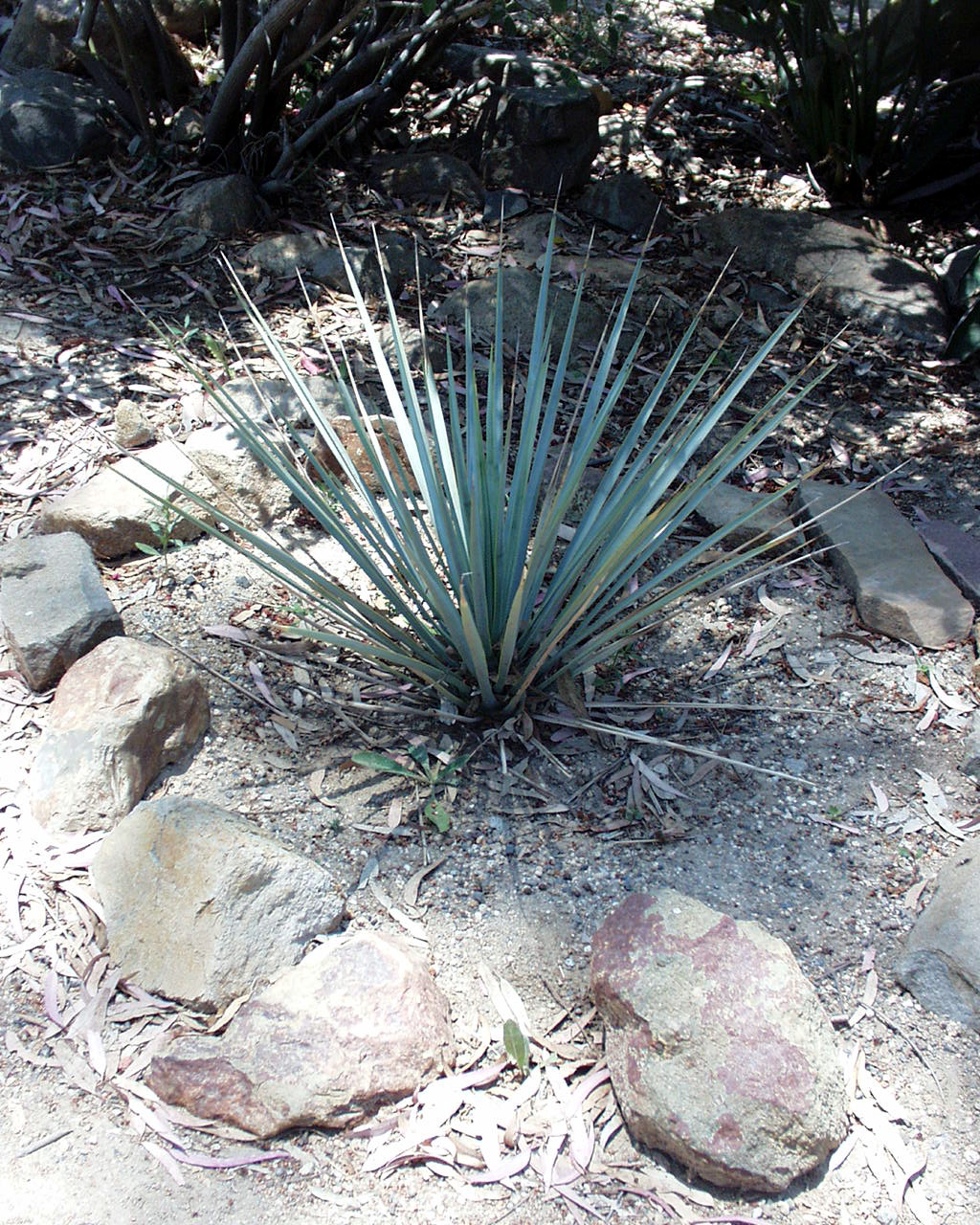 The
ten years between the advent of Jolson's singing Kol Nidre in the Jazz
Singer and Carrillo's purchase of the ranch from longtime San Diego County
resident Charles Kelly were filled with movies and friendships with some of
cinema's biggest stars, among them Clark Gable and Carole Lombard, who
vacationed on the ranch. Kelly had named his 1,700-acre spread Rancho de
los Kiotes after the "Spanish dagger" plant that grew on its
grounds, but Carrillo changed the latter part of the name to the more
traditional Spanish spelling of Los Quiotes and purchased an additional 800
acres of adjoining land.
The
ten years between the advent of Jolson's singing Kol Nidre in the Jazz
Singer and Carrillo's purchase of the ranch from longtime San Diego County
resident Charles Kelly were filled with movies and friendships with some of
cinema's biggest stars, among them Clark Gable and Carole Lombard, who
vacationed on the ranch. Kelly had named his 1,700-acre spread Rancho de
los Kiotes after the "Spanish dagger" plant that grew on its
grounds, but Carrillo changed the latter part of the name to the more
traditional Spanish spelling of Los Quiotes and purchased an additional 800
acres of adjoining land.
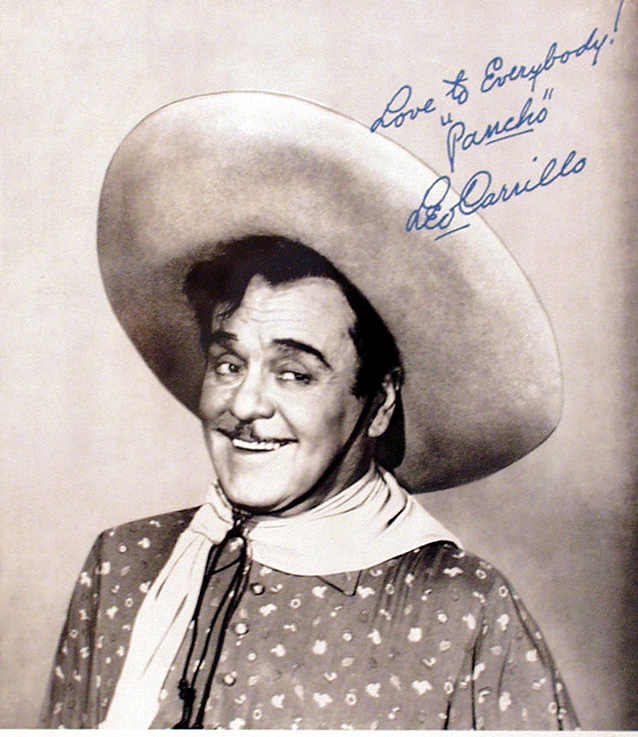 Other
close friends of Carrillo were humorist Will Rogers, with whom he started in
vaudeville, and writer Irvin S. Cobb. From
Other
close friends of Carrillo were humorist Will Rogers, with whom he started in
vaudeville, and writer Irvin S. Cobb. From
the movies, he transitioned again to television, becoming famous to a
generation of children as the
Spanish Dagger—Los Quiotes
paunchy sidekick Pancho in the syndicated Ziv
Productions television series, "The Cisco Kid," starring Duncan
Renaldo. Carrillo was already in his late 60s and early 70s during the
six seasons he played the humorous Pancho who mangled the English language and
loved nothing more than eating. Cisco Kid was created by the humorist
O'Henry, as an American West counterpart of Don Quixote, coincidentally the
hero of the first book Carrillo ever read. The Cisco Kid shot guns out of
villains' hands, but typically eschewed
violence.
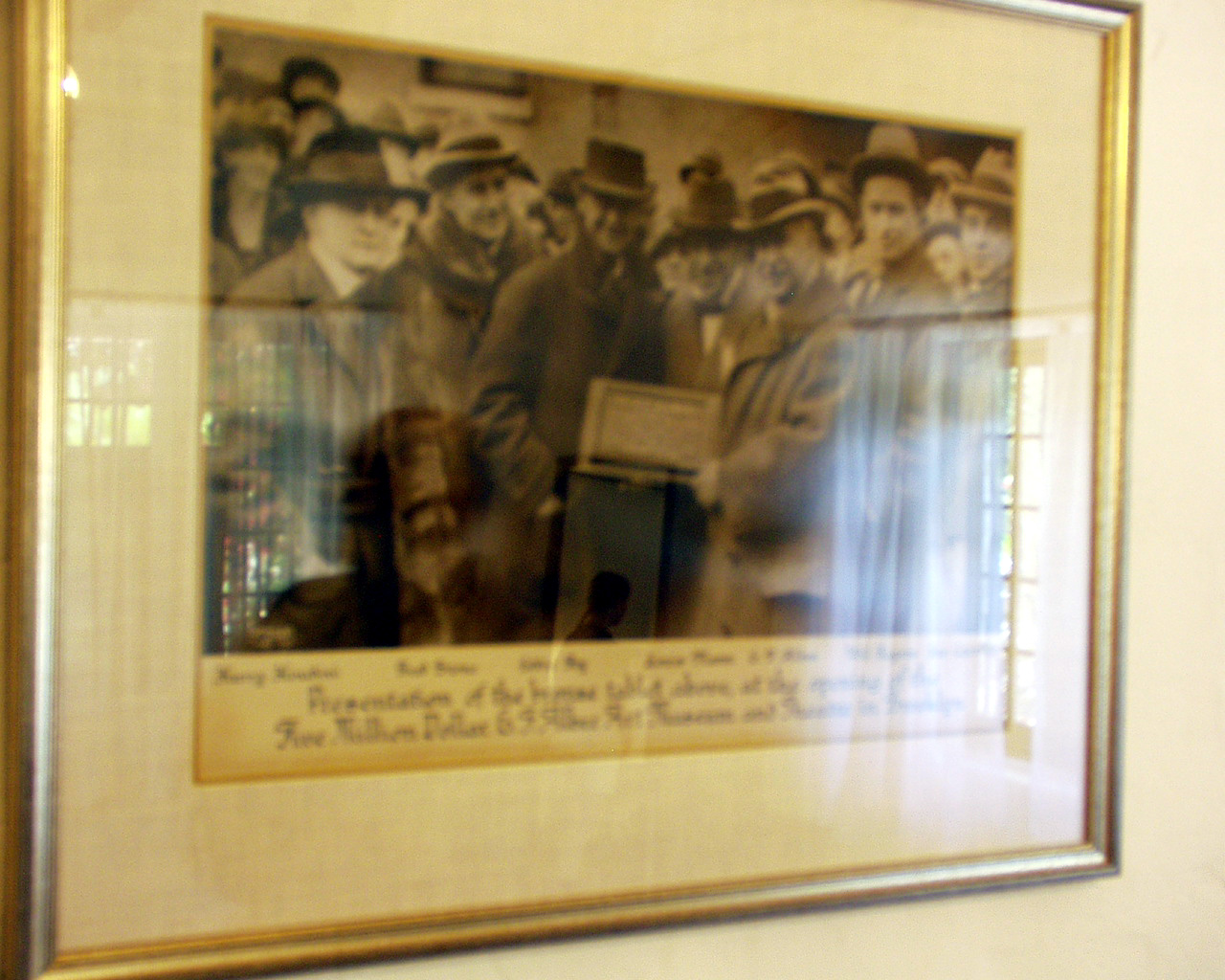 Mementos
of Carrillo's early stage years can be found at a 27-acre
remnant of his ranch that the City of Carlsbad's recreation department
operates as the Leo Carrillo Ranch Historic Park. Inside the main hacienda, Carrillo
is seen at the far right of a photograph along with Harry Houdini, Fred
Stone, Eddie Foy, Louis Mann, E. F. Albee and Will Rogers at the opening of
the E.F. Albee Art Museum and Theatre in Brooklyn.
Mementos
of Carrillo's early stage years can be found at a 27-acre
remnant of his ranch that the City of Carlsbad's recreation department
operates as the Leo Carrillo Ranch Historic Park. Inside the main hacienda, Carrillo
is seen at the far right of a photograph along with Harry Houdini, Fred
Stone, Eddie Foy, Louis Mann, E. F. Albee and Will Rogers at the opening of
the E.F. Albee Art Museum and Theatre in Brooklyn.
Sam Warner, Al Jolson and Harry Houdini all provided Jewish strands for the
tapestry of Carrillo's life, which, off camera, he devoted to the
preservation of California landmarks and to the dissemination of knowledge
about California's colorful past. Carrillo, who served on California's
beach and parks commission, was instrumental to the successful preservation
efforts for the Hearst Castle at San Simeon, the Los Angeles Arboretum, and
Mexican-style Olvera Street, located near his childhood home in Los Angeles.
His family literally was among the first European settlers in California. His
great-great grandfather José Raimundo Carrillo (pronounced "Cay-reel-yo"
by the actor) a leather-jacketed soldier accompanying Father Junipero Serra
and General Gaspar de Portola on the trek in 1769 which established the
mission system in what then was known as Alta California.
Our guide at the ranch, Charles Balteria, filled us in on the
rest of the family's genealogy: Carrillo's great grandfather, Carlos
Antonio, briefly served as a provisional governor of California; the actor's
grandfather was a judge, and his father served as chief of police of Los
Angeles in the late 19th century.
With such a lineage, you might think Carrillo was born to wealth, but in fact
his was a working class family. From downtown Los Angeles they moved to
Santa Monica to farm and fish, and Carrillo worked briefly for the railroads.
He found his way up to San Francisco where he worked as a cartoonist for the Examiner.
His impromptu impersonations and performances prompted colleagues to
urge him to try out for the stage; a career move that led to vaudeville in New
York (telling dialect stories about Mexicans, Japanese, Chinese, and
Italians), and eventually onto the legitimate stage.
After returning to California, Carrillo had his main home in Santa Monica, but
the ranch was his getaway home—the place where he could indulge his love of
California history.
Carrillo emblazoned his flying LC brand not only on 600 head of cattle at the
ranch but also on fireplace mantles, gates, pavings and chimneys. When
the City of Carlsbad took over the property in 2003 (it was donated as a park
by the owners of a nearby housing development), the insignia was added to
various items that can be seen around the ranch, even garbage cans.
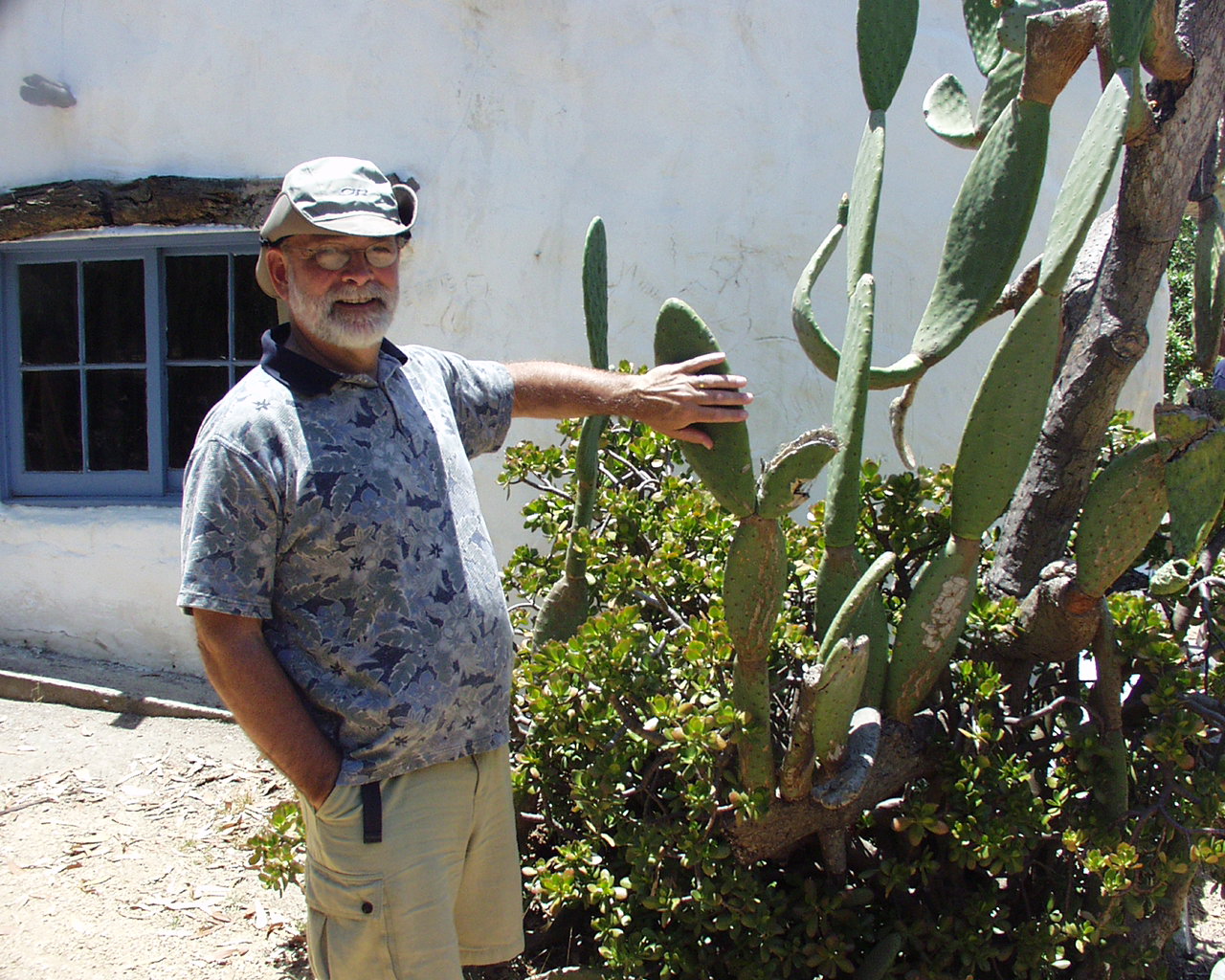 Balteria
and recreation leader Tiffan Chilcott led visiting cousin from Louisville,
Harry Jacobson-Beyer, and me, along with others, on a tour that took us from
the small home that was used by the overseer (now the visitor's center) along
a path lined with spineless cactus, which horticulturalist Luther Burbank
developed in the hope of creating an easily replenished source of feed for
cattle. The problem, said Balteria, was that the cattle didn't like the
taste and if they ate too much of it they got diarrhea. But Carrillo
liked the look and safety of them, so had them planted all over. The ranch
house looks like an old U-shaped Mexican hacienda, but that required some
doing. Kelly had added a second story and some pillars to the adobe house
found on his property. After purchasing it, Carrillo had workers take down the
second
Balteria
and recreation leader Tiffan Chilcott led visiting cousin from Louisville,
Harry Jacobson-Beyer, and me, along with others, on a tour that took us from
the small home that was used by the overseer (now the visitor's center) along
a path lined with spineless cactus, which horticulturalist Luther Burbank
developed in the hope of creating an easily replenished source of feed for
cattle. The problem, said Balteria, was that the cattle didn't like the
taste and if they ate too much of it they got diarrhea. But Carrillo
liked the look and safety of them, so had them planted all over. The ranch
house looks like an old U-shaped Mexican hacienda, but that required some
doing. Kelly had added a second story and some pillars to the adobe house
found on his property. After purchasing it, Carrillo had workers take down the
second
Ouchless cactus—Harry Jacobson-Beyer puts
his hand on spineless cactus at Carrillo ranch.
story and the pillars, gut the insides of the first floor, and then
recreate it as the salon, dining room, kitchen complex. To that he had
them add bedroom wings on either side of the old building to give the ranch
the appearance of yesteryear. His wife furnished the house with
antiques, such as might have been brought to California from Boston by clipper
ship. But one bedroom—the horseman's bedroom where Gable and Lombard
stayed—has a western motif where, guide Balteria pointed out, there were
"stirrups on the mirrors, spurs on the door handles, and a rawhide saddle
as a desk chair."
The kitchen had gleaming stainless steel counters suitable for the
entertaining that Carrillo liked to do for his friends from Hollywood.
At one memorable party, Carrillo hosted 200 actors from the Lambs
Players. Edith, a New Yorker who was a bit shy around the Hollywood
crowd, had a small cottage up a hill from the property where she could retreat
into privacy and work as an artist. She also was a collector of Indian
artifacts. Their adopted daughter, Marie Antoinette (Toni), loved the
party life, and as Mrs. Frank Delpy continued the tradition at Rancho de los
Quiotes until she sold the last piece of it in the 1970s.
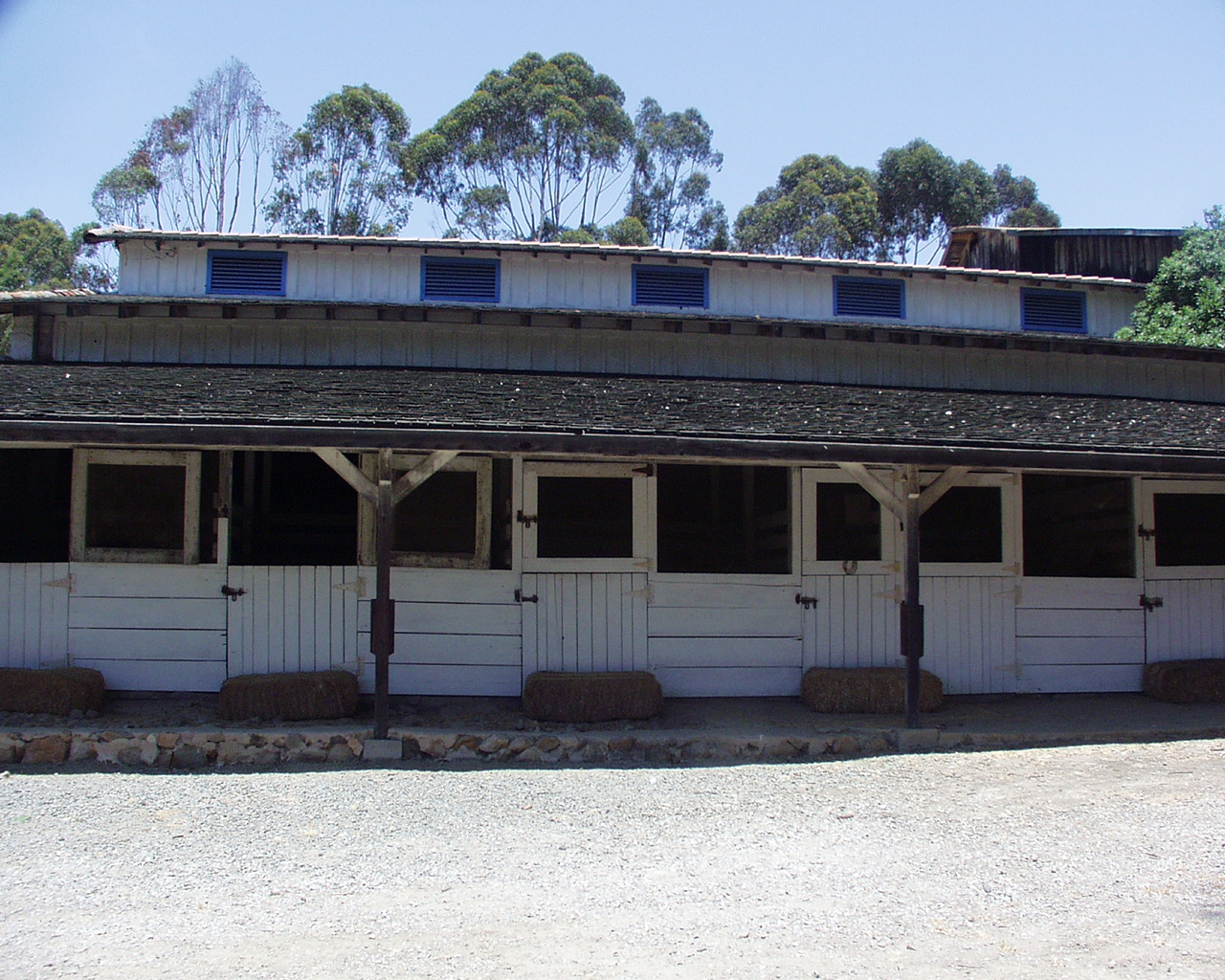 Besides
the house itself, there is a three-story stable, built on a hill. In
the lower level were stalls for Carrillo's horses, including Conquistador, a
Palomino that he rode in parades and in mounted processions from rancho to
rancho in which people could donate to charity for the opportunity to ride
with him and other celebrities.
Besides
the house itself, there is a three-story stable, built on a hill. In
the lower level were stalls for Carrillo's horses, including Conquistador, a
Palomino that he rode in parades and in mounted processions from rancho to
rancho in which people could donate to charity for the opportunity to ride
with him and other celebrities.
Conquistador, his favorite horse, is buried somewhere on the
property, but the cross that once stood atop the grave has been removed to
prevent anyone from locating and disturbing the remains. The second
floor of the barn is for hay and feed storage, and the third level is a bunk
room for the vaqueros who worked the ranch. Sometimes some of Carrillo's
Hollywood friends would sleep in the bunkhouse, but often, if there were no
room in the main house, they would pitch a tent or drive a trailer onto the
grounds.
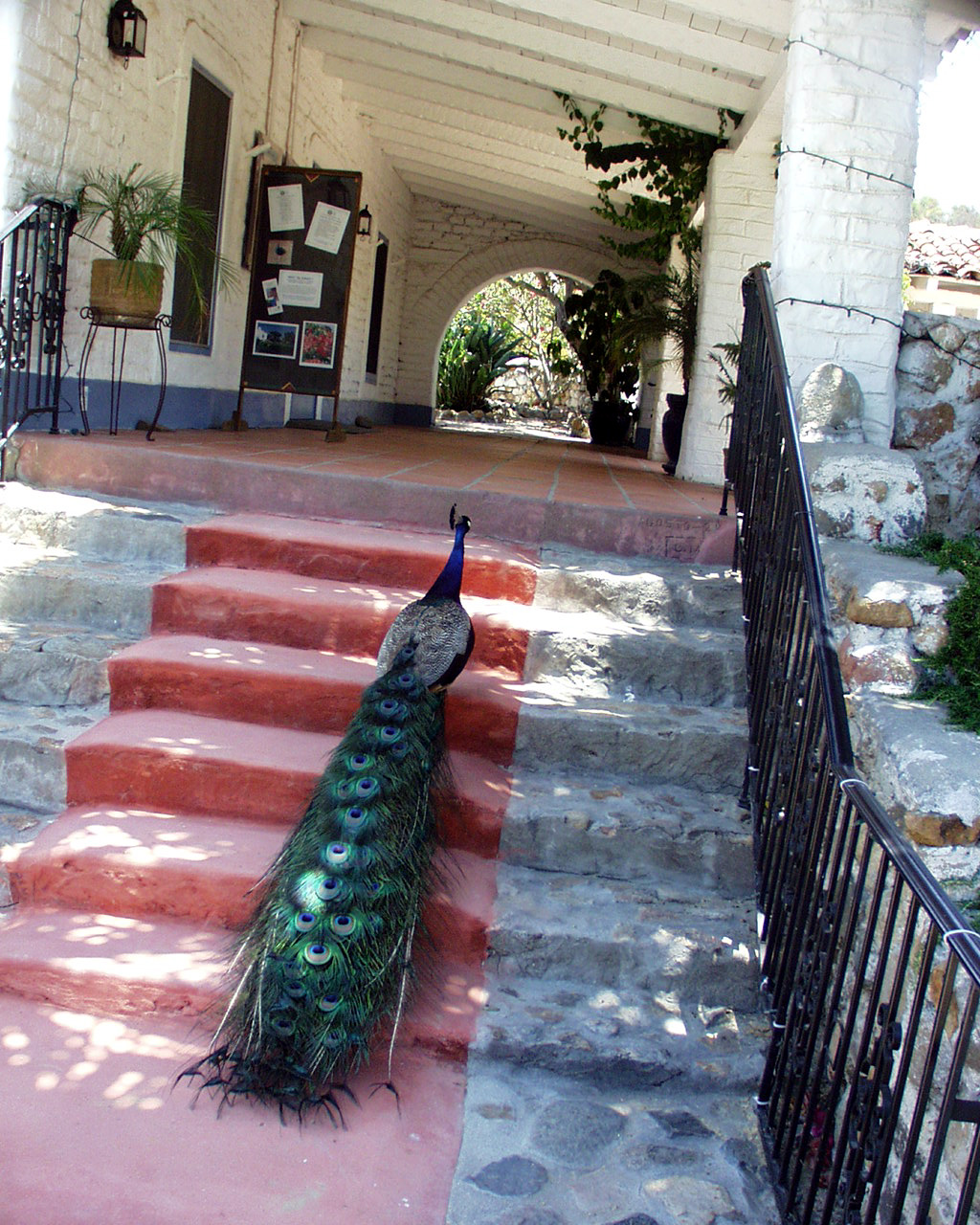 A
big beautiful brick barbecue situated near the swimming pool was a perfect
setting for afternoons stretching into evenings with guitar music, and
heaping portions of barbecued carne, under the California sun and later its
stars. One can imagine, at some of the smaller get-togethers, Carrillo telling
his guests stories passed down by his ancestors about early California.
His stories occasionally may have been punctuated by the lulling of cattle or
by the shrill call of peacocks, whose descendants continue to stroll
fearlessly wherever on the ranch they care to go.
A
big beautiful brick barbecue situated near the swimming pool was a perfect
setting for afternoons stretching into evenings with guitar music, and
heaping portions of barbecued carne, under the California sun and later its
stars. One can imagine, at some of the smaller get-togethers, Carrillo telling
his guests stories passed down by his ancestors about early California.
His stories occasionally may have been punctuated by the lulling of cattle or
by the shrill call of peacocks, whose descendants continue to stroll
fearlessly wherever on the ranch they care to go.
To raise funds, the Leo Carrillo Ranch sells his book for $95 a copy,
but if people want a less expensive way to read the actor's warm, nostalgic,
and thoroughly enjoyable stories, copies of The California I Love
always can be found in local
public libraries. Several days before taking the tour, I had checked out a
copy from the downtown San Diego Public Library.
Today the ranch once owned by the actor and preservationist is itself listed as
California Historic Monument 1020. A plaque placed August 6, 1996, is a fine
tribute to this son of California. It reads: "Between 1937 and
1940, these adobe and wood buildings were built by actor Leo
Carrillo as a retreat, working ranch, and tribute to old California culture
and architecture. The Leo Carrillo Ranch, with its flying 'lc' brand,
originally covered 2,538 acres and was frequented by Carrillo and his friends
until 1960. Leo Carrillo was a strong, positive, and well-loved role model who
sought to celebrate California's early Spanish heritage through a life of good
deeds and charitable causes."

